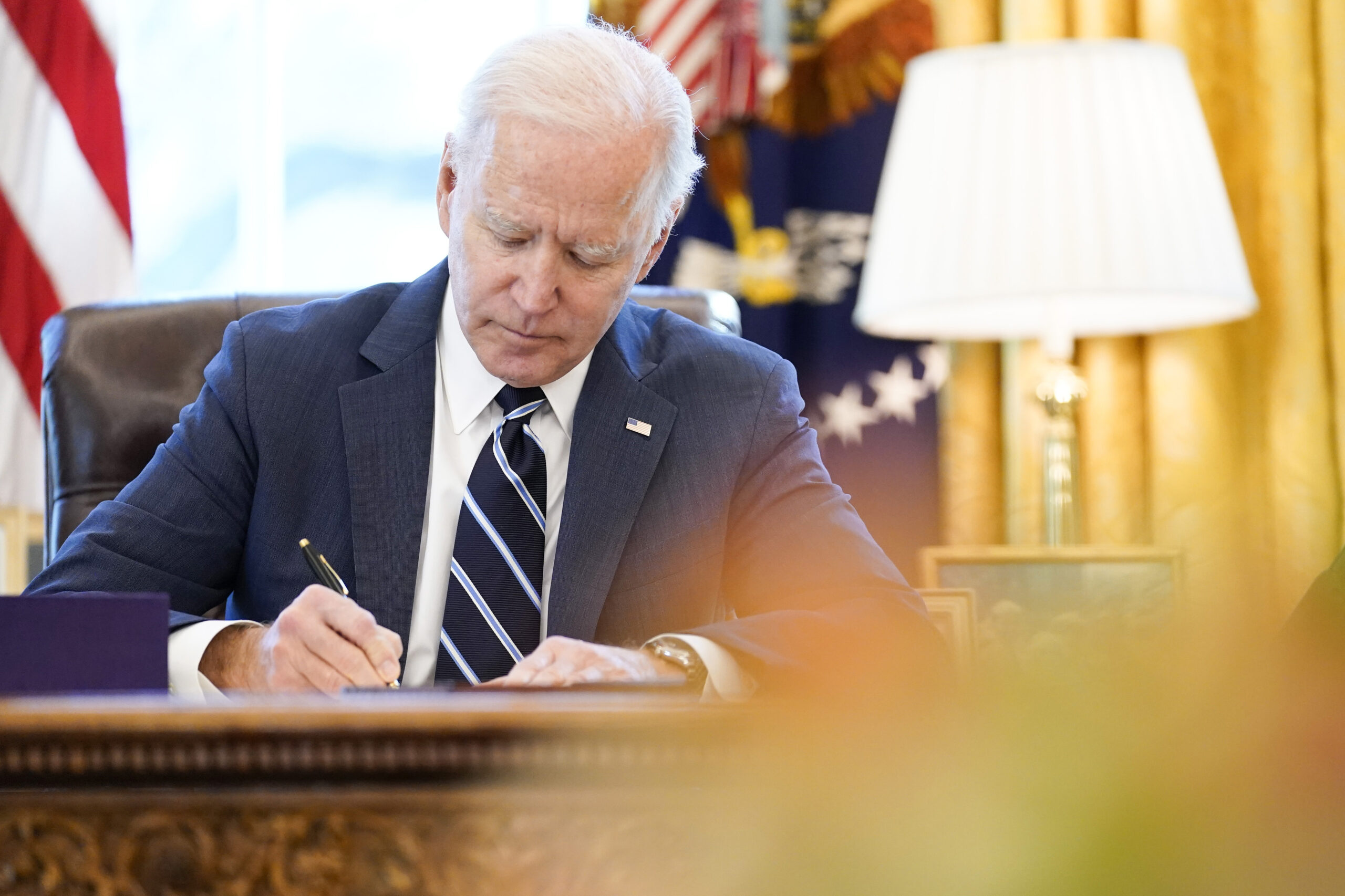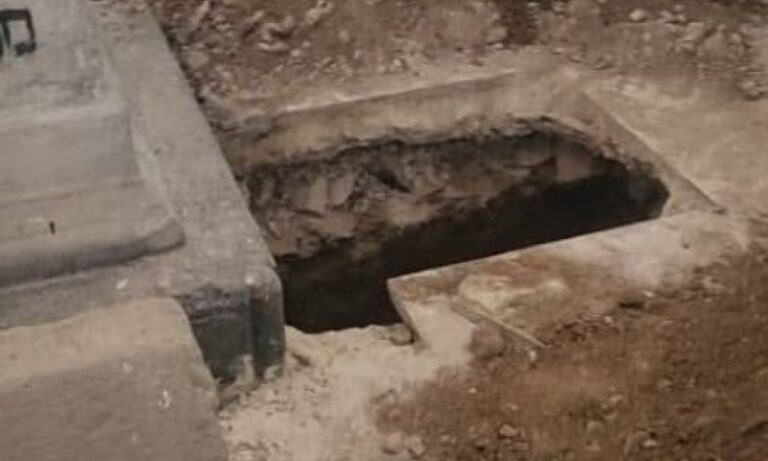Joplin officials say they have big plans for $13.8 million of pandemic relief funds the tornado-ravaged southwestern Missouri city received under a two-year-old federal law. Yet the latest federal records show none of the money has been spent — or even budgeted.
In fact, about 6,300 cities and counties — nearly 1 in 4 nationwide — reported no expenditures as of this spring, according to an Associated Press analysis of data released by the U.S. Treasury Department. About 5,100 of those listed no projects — either planned or underway.
So what gives? Is the money not needed? Are cities just sitting on it?
Local and federal officials told the AP in interviews that the publicly available data is misleading — pockmarked by differing interpretations over exactly what must be reported, lagging in timeliness and failing to account for some preliminary planning. Critics contend it’s an indication of a flawed pandemic response.
Federal officials estimate that governments have spending commitments for more than 80% of the funds, even if that’s hard to tell from their reporting requirements.
Joplin, for example, plans to spend its pandemic aid on housing projects, high-speed internet, streets, a bicycle park, public safety equipment and more. The City Council approved the plan last month. But it won’t show up on federal reports until October.
The city, which was devastated in 2011 by one of deadliest tornadoes in U.S. history, took a deliberate approach with its pandemic aid to develop “really transformational projects,” said Leslie Haase, the city’s finance director.
Over the past couple years, it leveraged the pandemic aid to win millions of additional dollars of state grants. With the combined funds, it plans to relaunch an expired post-tornado program that helps people make down-payments on homes. The city also plans to spend millions of dollars to repair or demolish old houses.
“I think by the time 2026 rolls around, Joplin will be a better community,” Haase said.
The $1.9 trillion American Rescue Plan — passed in 2021 by a Democratic-led Congress and signed by President Joe Biden — contained $350 billion of flexible aid to states, territories, tribes, counties, cities and towns. The Biden administration says the money was intended to provide both immediate aid amid a health crisis and a longer-term boost for communities.
Governments must obligate that money for projects by the end of next year and spend it by the close of 2026.
As of their April reports, more 26,500 governments collectively had spent 43% of their funds and approved plans for spending 77% of the money, according to the AP’s analysis.
The actual amount of spending commitments likely is well over 80% when accounting for lag times and different reporting approaches taken by local governments, said Gene Sperling, the White House American Rescue Plan coordinator
“What you see across the country is that counties, cities, states overwhelmingly have committed these funds, are using them, are on track to meet their legal deadlines to have all the funds obligated by the end of 2024,” Sperling said.
But Republicans and fiscal conservatives have questioned whether the spending is necessary, noting that most states rebounded quickly from an initial tax plunge during the pandemic to post large budget surpluses.
“Although the Left claimed their $2 trillion bill was designed to fight COVID, they wasted hundreds of billions of Americans’ hard-earned tax dollars on ridiculous things,” Republican U.S. Rep. Jason Smith, chairman of the House Ways and Means Committee, said in a statement to the AP.
Among other things, the money helped finance an upscale hotel in Florida, a minor league baseball stadium in New York and prisons in Alabama — drawing outrage from some members of Congress.
Some governments waited to do anything with the money until the Treasury Department finalized its rules in April 2022. Details are lacking on how some governments are using their funds because the Treasury relaxed reporting requirements for any money categorized by state or local officials as a replacement for lost revenues.
According to the AP’s analysis, more than 6,000 local governments categorized their entire federal allotment as “revenue replacement” — often taking advantage of a Treasury rule that allows up to $10 million of assumed revenue loss without having to prove it.
Though they can provide more details if they choose, governments categorizing all their federal aid as replacement revenue only have to report it as one project, the Treasury told the AP.
But some didn’t even do that.
The Denver suburb of Lakewood, Colorado, claimed its entire $21.6 million allotment as a revenue replacement, since it had dipped into reserves to pay police during the pandemic. It reported no projects.
Yet the federal aid helped the city to construct sidewalks, replace computer software, upgrade the police radio system and make fire and safety improvements to a civic center, among other things, said Lakewood Chief Financial Officer Holly Bjorklund.
Those were “essential things that really needed to be done and would cost more if we waited longer to address them,” she said.
Maryland’s capital city of Annapolis also described no projects in its April report. But Annapolis already has used $1.2 million of its $7.6 million allotment as a revenue replacement for its depleted public transit funds, said city spokesperson Mitchelle Stephenson. It expects to tap more of the federal aid for city operations in the 2024 budget.
The Treasury’s guidance about how to report revenue replacement funds used for government services wasn’t very clear, said Katie Buckley, federal funding assistance program director for the Vermont League of Cities and Towns. But Buckley said she advised local officials to report it all as one project for government services, and then list what that included.
Counting the federal money as replacement funding for government services shouldn’t relieve local officials of describing what they did with it — even if it just went toward salaries or office supplies, said Sean Moulton, senior policy analyst at the nonprofit Project on Government Oversight.
“This is taxpayer money, and a lot of it,” said Moulton, adding: “There should be accountability that follows it.”
There are no particular repercussions for reporting things incorrectly. There also are no immediate penalties for not reporting at all — though Treasury’s guidance says “a record of late reporting” could lead to the “development of a corrective action plan, or other consequences.”
Ascension Parish, Louisiana, which received $24.6 million, reported no expenses or projects as of April — though the Parish Council had approved a project list last year.
A financial tracking document provided by the parish to the AP shows a purchase order was initiated last October for a $1 million improvement project at Youth Legacy Duplessis Park. The materials were delivered for the project in mid-March, before the Treasury’s reporting deadline. But most of the parish’s other projects weren’t underway yet by the April report.
“We’ve haven’t spent a lot of the money, but we’ve got a lot contracts, a lot of design work,” said Patrick Goldsmith, the parish’s chief financial officer.
He said the projects should be included when the next quarterly reports are released.
While many governments have made “steady progress” using pandemic relief funds, some waited until closer to the July start of their fiscal years to approve spending plans, said Teryn Zmuda, chief economist and research officer at the National Association of Counties.
“We don’t want to rush these funds,” Zmuda said. “While the intent of the dollars was to respond to the pandemic, it was also to very intentionally build your community based on its specific needs.”
(AP)











